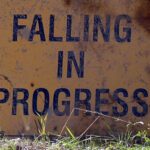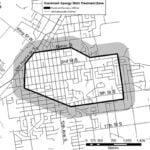Home »

Province beefing up BC Parks
The provincial government announced yesterday it intends to build on its world-renowned provincial parks system by hiring more park rangers to enhance conservation, improving services for persons with disabilities and launching a new BC Parks Foundation so community groups, businesses and individuals can come together and have a voice in BC Parks priorities.
In addition, the province will add more than 1,900 new campsites to help meet growing demand. More than 800 of the sites will be in provincial parks and over 1,000 will be in recreation sites, delivering a range of camping experiences in areas of highest demand.
The commitments are contained in a new BC Parks Future Strategy, ‘Protecting our Legacy Together.’
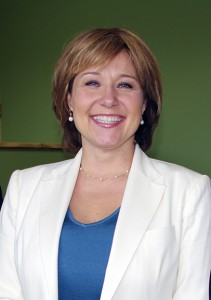
“BC Parks define who we are as British Columbians and are a vital part of the B.C. advantage,” said Premier Christy Clark. “Protecting our world-class parks for future generations ensures we continue to attract global attention through tourism, investment and research, as we honour our natural history and as families create lasting memories together.”
As part of the BC Parks Future Strategy, the province will invest up to $22.9 million over five years for campsite expansion in provincial parks and recreation sites, and will allocate funding in 2017 for other recreation and conservation initiatives. The province continues to invest $15 million to maintain and refurbish existing campsites and backcountry recreation sites throughout B.C.
“Stewardship of the land and ensuring our natural environment’s well-being through heightened conservation is government’s core responsibility, and we will be increasing our investment through the upcoming budget,” Premier Clark said. “The parks we love are globally significant. Protecting and enhancing our parks honour our natural history, is a gift for future generations and to the world.”
The BC Parks Future Strategy can be viewed here.
The strategy celebrates First Nations heritage and cultural values and seeks to reflect their unique ties to the lands and waters that make protected areas special. It also includes new opportunities for First Nations, local governments, community groups, businesses, other stakeholders and the general public to have a greater role in making sure BC Parks continues to provide globally recognized recreation and conservation.

“We know British Columbians are passionate about our parks,” said Environment Minister Mary Polak. “But the world has also taken notice. Similar to what we’ve accomplished with the Great Bear Rainforest, our success in delivering unparalleled experiences with nature has brought increasing demand to accommodate more people, programs and facilities. The investments we’re making and the opportunities our strategy provides for all British Columbians will help to support a strong and secure parks system for generations.”
Campsite expansion will occur in all regions of the province. However the majority will be where demand is greatest in the Lower Mainland, Vancouver, Okanagan and the Kootenays. Focusing on both provincial parks and recreation sites enables targeted improvements to the highest demand areas.
Included in the BC Parks campsite expansion is construction of new sites, as well as any associated infrastructure, including roads, water/sewer expansion, electrical upgrades, shower/toilet buildings and outhouse facilities. New campground developments will also incorporate accessible design standards. Included in the recreation site expansion is construction of new sites, as well as associated infrastructure, such as roads and outhouse facilities.
Expansion will be supported by increased funding to address project administration and operating and maintenance costs, ensuring the long term investment in these provincial assets.
People living with disabilities should be able to enjoy outdoor activities with no barriers. The BC Parks Future Strategy aims to improve accessibility within provincial parks.
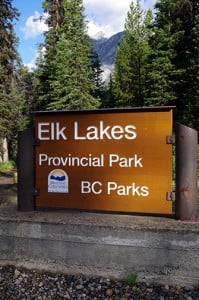 To support the goal of frontcountry campgrounds and day-use areas all having accessible campsites, toilets, natural features and parking areas, BC Parks will undergo accessibility audits and assessments.
To support the goal of frontcountry campgrounds and day-use areas all having accessible campsites, toilets, natural features and parking areas, BC Parks will undergo accessibility audits and assessments.
In addition, BC Parks will seek out partnership opportunities with disability advocates to fund enhanced accessibility features in each of the five park regions.
In addition to new campsites, recreation and conservation investments, the BC Parks Future Strategy will see the province contributing a $5-million endowment to seed a new BC Parks Foundation to allow private-sector donations to be managed independently. The foundation will help generate private revenue, to be spent on promoting and enhancing the experience in BC Parks.
“People come from all around the world to visit our BC Parks,” said Jobs, Tourism and Skills Training Minister Shirley Bond. “This year, more than 4.5 million international visitors have come to our province and many of them have been drawn by the spectacular natural beauty of our parks. The new BC Parks Future Strategy will provide visitors with even more options to stay and explore parks.”
Jeremy McCall, executive director, Outdoor Recreation Council added: “Many of the Outdoor Recreation Council’s 100,000 or more members recreate in the backcountry of B.C.’s amazing provincial parks. This wide ranging new program, which will include more campsites in the parks as well as recreation sites elsewhere on Crown land, will be welcomed by our members. We are especially pleased to note the proposal to increase the number of park rangers, which will be a huge benefit for recreation in the back country.”
Other programs are also being established within the BC Parks Future Strategy to give individuals the opportunity and choice to support BC Parks.
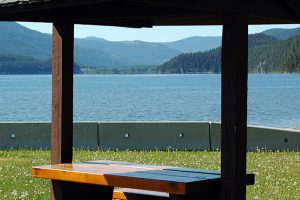
This includes dedicated BC Parks licence plates, where proceeds will be reinvested into provincial parks. In partnership with ICBC, the design of the new plates will be unveiled and available for purchase in the coming weeks.
Along with enhancing infrastructure and volume handling capability, the province is also increasing the number of park rangers, it noted in a Nov. 28 press release.
The BC Parks Future Strategy will increase the number of park rangers around the province.
Park rangers’ duties range from maintaining trails and campsites, to monitoring wildlife habitats and species at risk, to ensuring guests are aware of risks posed by dangerous animals such as bears and cougars.
Employing more ranger staff will not only improve the ecological integrity and safety in the BC Parks system, it will create employment and skills training opportunities in many rural areas, and help boost economic activity in rural parts of B.C.
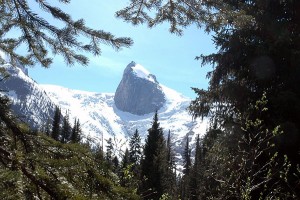
First Nations communities are also being included.
Respect for Aboriginal traditions and communities will be an important part of the future of BC Parks. BC Parks would like to invite First Nations communities and Aboriginal groups to express their culture and heritage through BC Parks, and in so doing share their perspectives on nature and history to the broader community.
These opportunities may provide avenues for Aboriginal elders and youth to reconnect with their culture and traditions, and connect other communities to theirs. Parks and recreational facilities can serve as the stage to help promote Indigenous culture, to honour First Nations’ history and the spiritual importance of their ancestral lands, the province noted in its press release.
“This strategy will also enhance the growth of a prosperous Aboriginal tourism industry within the province of B.C. by connecting visitors to exceptional, authentic Aboriginal experiences. While celebrating First Nations heritage and cultural values, the BC Parks Future Strategy will also assist AtBC in advancing a competitive and socially conscious Aboriginal tourism industry, while contributing to Aboriginal cultural understanding and economic prosperity,” stated Brenda Baptiste, chair, Aboriginal Tourism Association of British Columbia.
“The BC Parks Future Strategy acknowledges and commits BC Parks to develop government-to-government relationships with First Nations based on respect and recognition of Aboriginal title and rights in order to promote a long-term reconciliation. The Osoyoos Indian Band fully supports the strategy and has experienced first hand the benefit of developing a government-to-government relationship with BC Parks. This relationship has had a positive impact on our community through the recognition of the First Nations historical place names and the creation of new opportunities to reconnect to these historically, culturally and spiritually significant areas in our territory,” said Clarence Louie, Chief of the Osoyoos Indian Band.

B.C.’s provincial parks receive more than 21 million visits each year. BC Parks manages the third largest parks system in North America behind the United States’ National Park Service and Parks Canada.
British Columbia has the highest percentage of its land base dedicated to protected areas of all provincial Canadian jurisdictions.
There are 10,700 campsites in 270 B.C. park front-country campgrounds and 2,000 backcountry campsites. And there are 10,400 campsites in 1,500 recreation sites.
Work to improve and enhance the BC Park experience is being welcomed province-wide.
“The BC Society of Park Operators has been encouraging BC Parks to increase camping capacity and is delighted with the news of additional sites. These new sites will provide greater access for B.C. residents and visitors to camp throughout B.C.,” said Eddie Wood, president of the BC Society of Park Operators.
“Our parks are core to what it means to be British Columbian. World-class in size and splendour, they are arks for wildlife and ancient forests. The ‘super’ in ‘Super, Natural B.C.’, they attract people to visit, to settle, to invest in our economy and our lifestyle. Our parks are where youth, families, First Nations, new Canadians -all our citizens, can come together, to play, to discover and to celebrate life,” said Ric Careless, chair, Campaign for BC Parks. “So today, by investing in British Columbia’s parks, our government is re-committing to take good care of these special lands we love so much. And for that, I am deeply grateful.”

“I commend the Premier’s announcement and the government’s commitment of providing a sustainable funding model for BC Parks. The investment to improve and increase the number of campsites will increase the access, enjoyment and appreciation of B.C.’s great outdoors,” said Jim Glaicar, president of the BC Wildlife Federation.
“The Wilderness Tourism Association of BC applauds the move by the B.C. government to re-invest in our provincial parks. B.C. provincial parks conserve many of the iconic landscapes, wildlife and vegetation that draw millions of tourists to the province every year. The adventure tourism experiences in B.C. are truly world class and unparalleled in North America, with provincial parks making a significant contribution to the provinces tourism draw and local economies. Our provincial parks play an important role for most of the adventure tourism businesses represented by the Wilderness Tourism Association of BC. Ensuring their ongoing stewardship, upkeep and conservation of the natural and cultural resources will help B.C.’s tourism industry remain vibrant and sustainable into the future,” said Kevin Smith, president of the Wilderness Tourism Association.
Lead image: Alces Lake, Whiteswan Lake Provincial Park.
e-KNOW



